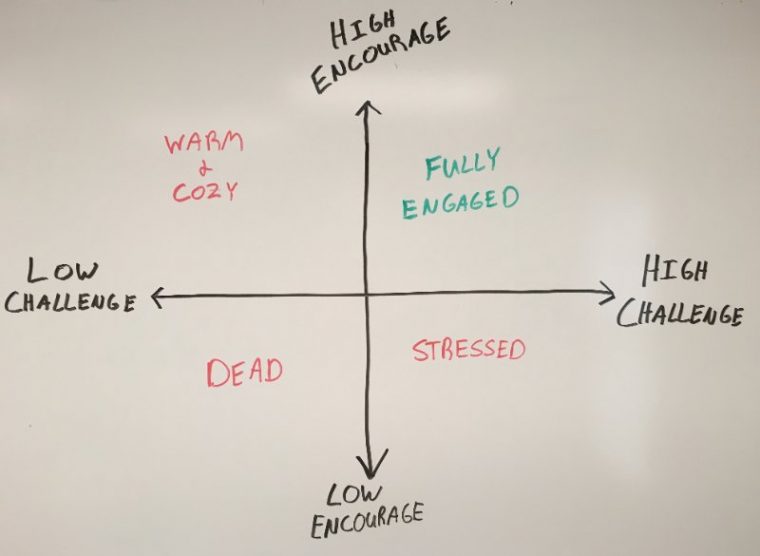Remember that overly critical leader you worked for who always demanded more and caused frequent burnout and turnover on your team? How about that manager that was super friendly, never held anyone accountable and always made excuses for those that underperformed? These are two extremes on the spectrum of encouragement and challenge. As leaders, we must create environments that our team loves but also that produce results.

What kind of leader are you: a Challenger or Encourager? What kind of environment are you creating? A useful tool to help with this is the Encouragement and Challenge Matrix.
Think about which quadrant your team currently is in. Also consider which is more natural for you: encouraging others or challenging them?
Quadrant 1 “DEAD” – organizations and teams that operate here don’t last long. These groups lack passion, purpose and don’t get much done. The team doesn’t enjoy being with each other and everyone is simply there for a paycheck.
Quadrant 2 “STRESSED” – the bottom line is valued above everything else. This type of environment pushes their team for a high level of results and productivity. There is always an increasing pressure for more. While victories may be celebrated, they are brief and quickly forgotten as the next mountain is tackled. This leader is a Challenger and sees his people as a means to an end, is never satisfied, and often finds himself frustrated. Burnout, turnover, and stress are high in these organizations.
Quadrant 3 “WARM & COZY” – relationship is valued above everything else. People enjoy working in this environment. Instead of colleagues, many people consider each other friends. This leader is an Encourager and is very relational, easy to get along with and truly loves their team. Unfortunately, they avoid confrontation, don’t set clear expectations, and tolerate a high level of dysfunction.
Quadrant 4 “FULLY ENGAGED” – relationship and results are both highly valued. These teams are successful, have a high level of trust, and are fully engaged in the organization’s mission. People work incredibly hard but not because they are forced to (like Quadrant 2) but because they are passionate about what they do and they don’t want to let the team down. These leaders aren’t afraid of conflict, communicate clear expectations, and repeatedly remind their people of the mission. They care about each team member, know where they are at personally and professionally, and dedicate time to developing each one.
What ONE ACTION can you take THIS WEEK to take a step towards Quadrant 4? What LONG TERM changes or priority adjustments do you need to make to create an environment that is fully engaged?
Question: As a leader which quadrant is most comfortable for you? You can leave a comment by clicking here.

Please note: I reserve the right to delete comments that are offensive or off-topic.